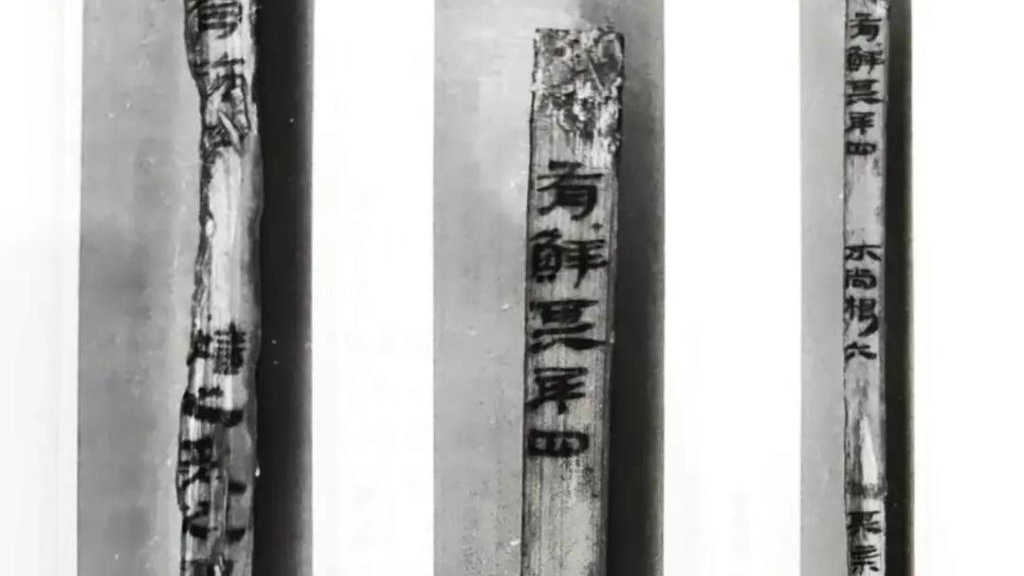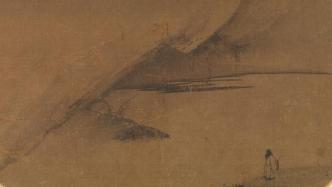
Guo Xi, a painter of the Northern Song Dynasty, said in "Linquan Gaozhi": "Poems are invisible paintings, and paintings are tangible poems", which clarified the inherent connection between poetry and painting. Poetry and painting are closely linked in Chinese culture. Many painters use poetry as inspiration, either directly depicting verses, or trying to express them subtly from the viewer's perspective.
"Vision and Poetry: The Poetry of Chinese Painting," a new exhibition at the Metropolitan Museum of Art in New York, explores the ways in which Chinese painters interact with poetry and develop richer layers of meaning in their art. The 90 paintings, calligraphy and decorative arts on display are almost all from the collection of the Metropolitan Museum of Art.
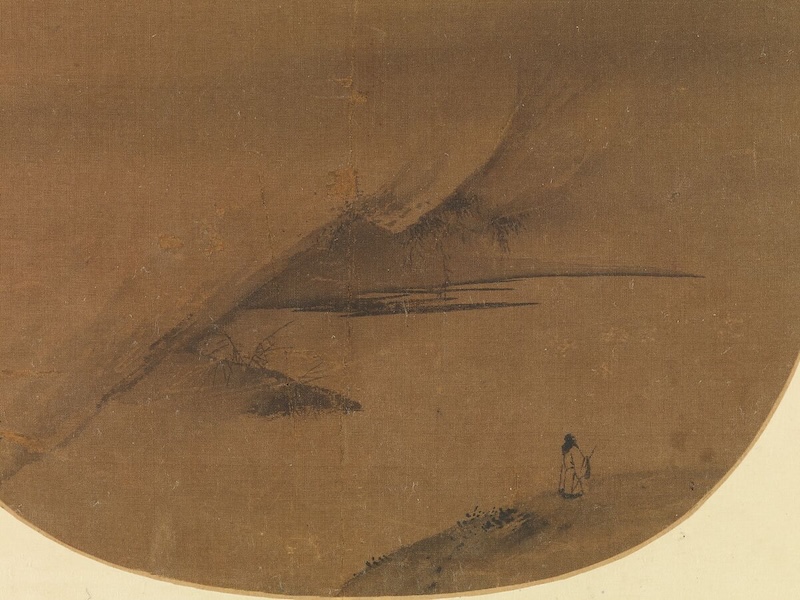
Liang Kai's "Riverside Singing Picture" (detail) of the Southern Song Dynasty, round fan
In China, the tradition of poetry and painting dates back more than two thousand years, with verses about nature, religion, ancient rituals and customs providing a rich source of inspiration for painters. For literati painters, the integration of the "three unique qualities" of poetry, calligraphy and painting is their pursuit, just as Su Shi said of Wang Wei that "there is painting in poetry, and there is poetry in painting."
Covering works inspired by ancient Chinese poetry such as the Book of Songs, Tang poetry, and Zen poetry, the exhibition explores the ways in which images and verses have inspired and influenced each other in different periods.

Guofeng Binfeng (detail), Ma Hezhi (c. 1130-c. 1170) and assistants; calligraphy attributed to Emperor Gaozong of the Song Dynasty, mid-12th century
Originating from the tradition of "The Book of Songs" and "Chu Ci"
The Book of Songs is the beginning of ancient Chinese poetry. It is the earliest collection of poems. It collects poems from the early Western Zhou Dynasty to the middle Spring and Autumn Period (11th century BC to 6th century BC). There are 311 poems in total. It is traditionally believed to be compiled by Confucius.
In 1127, after the "Jingkang Disaster", the Hui and Qin sects were kidnapped by the Jin people and died in captivity. The Northern Song Dynasty lost much of its northern territory. Song Gaozong Zhao Gou (r. 1127–1162), the ninth son of Song Huizong, fled south and established the Southern Song Dynasty court in Lin'an (Hangzhou) in 1138. The Southern Song Dynasty, which succeeded to the throne in turbulent times, was eager to prove the legitimacy of its regime through the revival of rituals. Under such historical conditions, the theme of Book of Songs has been fully developed.

Southern Song Dynasty, Ma He's Book of Songs, Xiaoya Hongyan's Shitu Volume, mid-12th century
There are 22 paintings of 16 types existing in the Song Dynasty's "The Book of Songs". The Metropolitan Museum of Art in New York, USA, has 6 sections including "Guofeng·Bin Feng" and "Book of Songs·Xiaoya·Hongyan's Shitu Volume".

Guofeng Binfeng (detail), Ma Hezhi (c. 1130-c. 1170) and assistants; calligraphy attributed to Emperor Gaozong of the Song Dynasty, mid-12th century
The calligraphy on "Guofeng·Binfeng" is Gaozong's running script style, probably written by a scribe or an imperial concubine. The painting was completed by Ma Hezhi, who was a Jinshi during the Shaoxing reign of Emperor Gaozong of the Southern Song Dynasty (1131-1162) and became the minister of the Ministry of Industry. His paintings of landscapes, figures, and Buddha statues have a unique style and elegant and ancient brushwork. When expressing landscapes and figures, he incorporates more calligraphy style. He created his own willow leaf drawing, which was derived from Wu Daozi's "Laitiao", and later became his own style, with elegant writing, light coloring, free and simple, smooth and flowing, so he was known as "Xiao Wusheng". Every time Gaozong and Xiaozong of the Song Dynasty wrote the Book of Songs, they ordered them to add pictures.
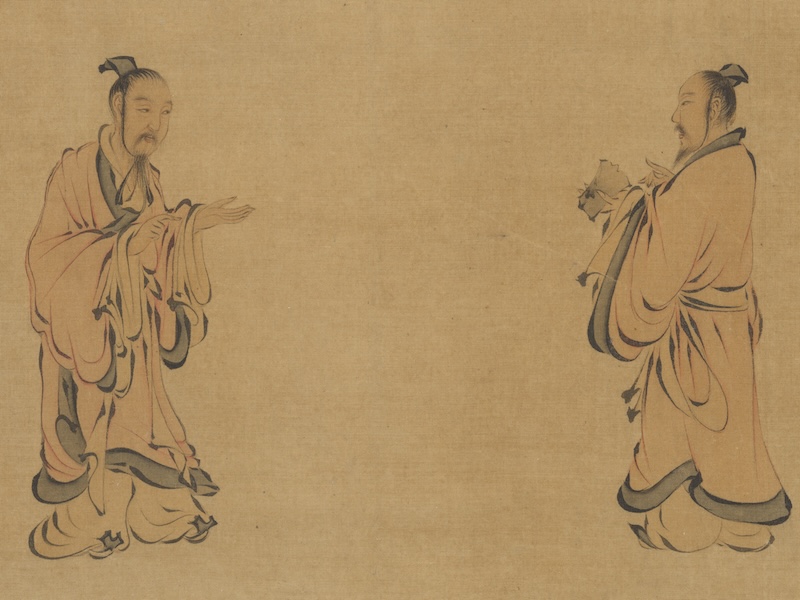
Guofeng Binfeng (detail), Ma Hezhi (c. 1130-c. 1170) and assistants; calligraphy attributed to Emperor Gaozong of the Song Dynasty, mid-12th century
The "Guo Feng·Bin Feng" depicted in the scroll is one of the fifteen national customs in the Book of Songs, with a total of seven chapters. It is a folk song of the Huaxia people in Bindi during the pre-Qin period. Bin (the name of the ancient capital city), located in today's Qingyang, Gansu, Xunyi and Bin County, Shaanxi, is the birthplace of the Zhou tribe. "Bin Feng" has seven poems in total, most of which describe farm life and hard work in Bin Di, the fiefdom of Gong Liu. It is the earliest pastoral poem in China.
The Book of Songs is also a recurring theme for painters of all ages. The album by Fei Qinghu (active from the late 18th century to the early 19th century) from the Qing Dynasty in the exhibition reproduces "July", a long poem about the agricultural cycle in "Bin Feng". The painter uses traditional Chinese mineral colors to create labor episodes that are in harmony with the land, and also constitute a stage shared by humans and seasonal changes.
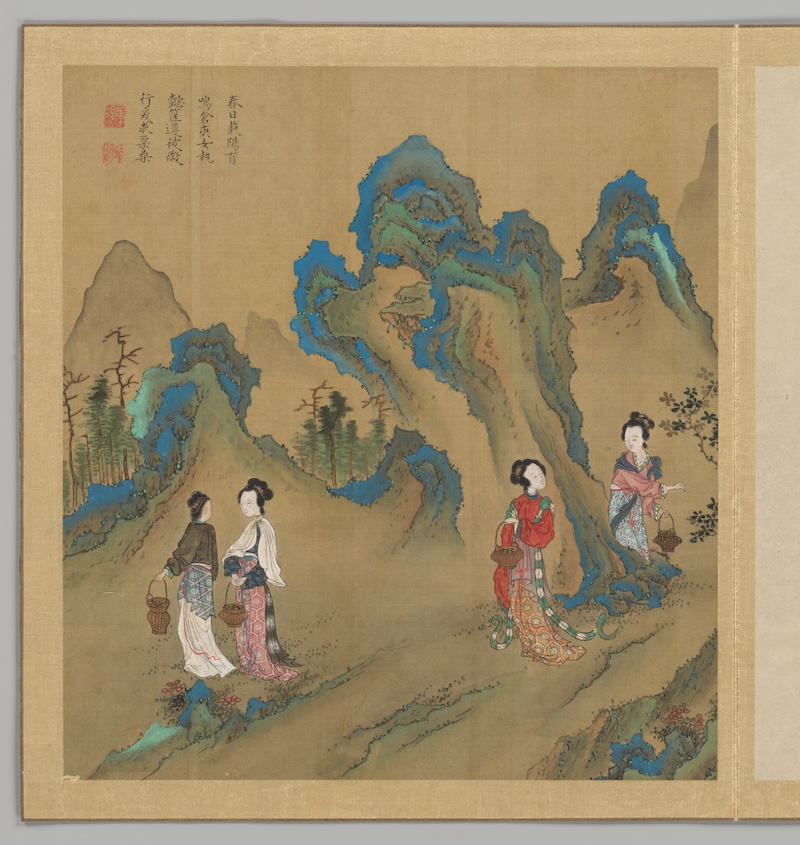
Fei Qinghu (active from the end of the 18th century to the beginning of the 19th century), "Bin Feng·July"
In addition to the "Book of Songs", Qu Yuan's (c. 340 BC to about 278 BC) "Nine Songs" is also a theme repeatedly painted by painters.
The character depicted in Liang Kai's "Riverside Singing Picture" of the Southern Song Dynasty may be Qu Yuan (about 340 BC to about 278 BC). He was a poet and politician of the Chu State during the Warring States Period. He advocated "beautiful politics" and advocated against Internally, he promoted talents and appointed capable people, established laws and regulations, and externally advocated uniting Qi to resist Qin. Because he was excluded and slandered by the nobles, he was exiled to northern Han Dynasty and Yuanxiang River Basin. After the Chu State's Yingdu was conquered by the Qin army, he sank into the Miluo River and died for the Chu State. Qu Yuan has long been regarded as a romantic and tragic figure. He is also the author of "Nine Songs" and one of the earliest poets in Chinese history.
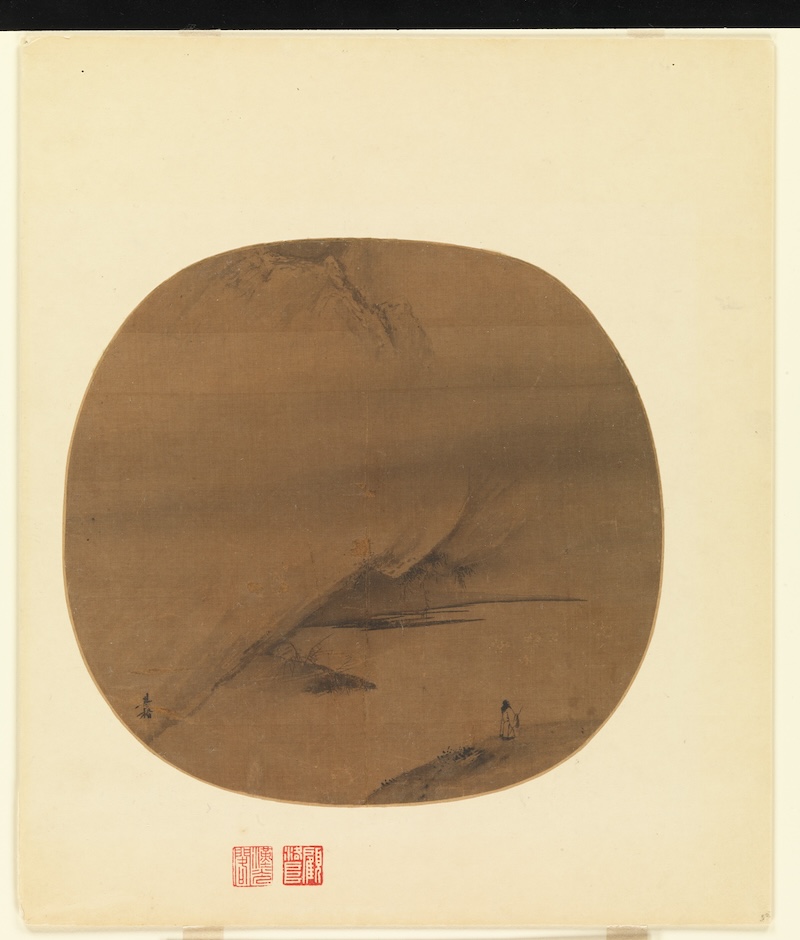
Southern Song Dynasty Liang Kaijiang River chanting picture group fan
Liang Kai had a bold and unrestrained temperament and did not adhere to etiquette. Called himself "Crazy Liang". From about 1201 to 1204, he was appointed to the Painting Academy to await imperial edicts, but he hung his gold belt in the courtyard and refused to leave, choosing to live in a Zen Buddhist temple. Similar to some of his most famous paintings, this small landscape conveys a spiritual intensity. Under the huge cliff, in the silent landscape, a lonely figure meditates on the illusory world in front of him.
The gods in "Nine Songs" were portrayed by painters as heroic, otherworldly images, and most were placed against blank backgrounds or simple scenes. Zhao Mengfu once painted "Nine Songs" in white based on Li Gonglin's composition, and inspired paintings on this theme created by Zhang Wo (active 1333-1365) and others in the 14th century.

Anonymous imitation of Zhao Mengfu's "Nine Songs Pictures (Album)" of Yuan/Ming Dynasty
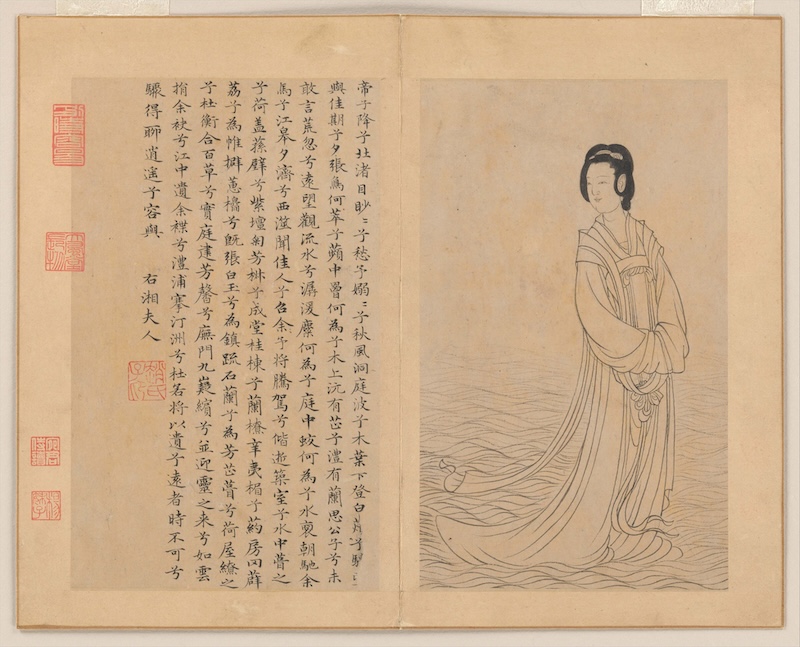
Anonymous imitation of Zhao Mengfu's "Nine Songs Pictures (Album)" of Yuan/Ming Dynasty
This album was once thought to be the work of Zhao Mengfu, but because the calligraphy on the album is not as good as Zhao Mengfu's, it is most likely a 14th-century copy. One page of "Yun Zhongjun" is a work written after the 17th century.
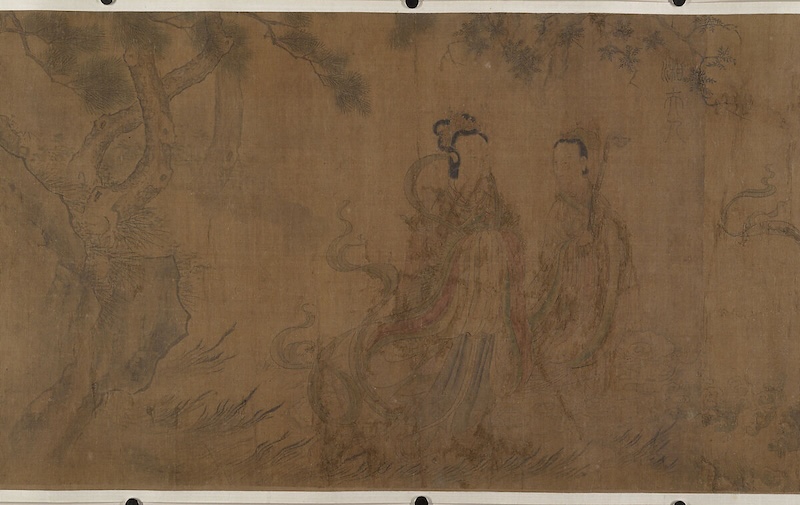
Anonymous "Nine Songs Pictures" (Volume) of Ming Dynasty
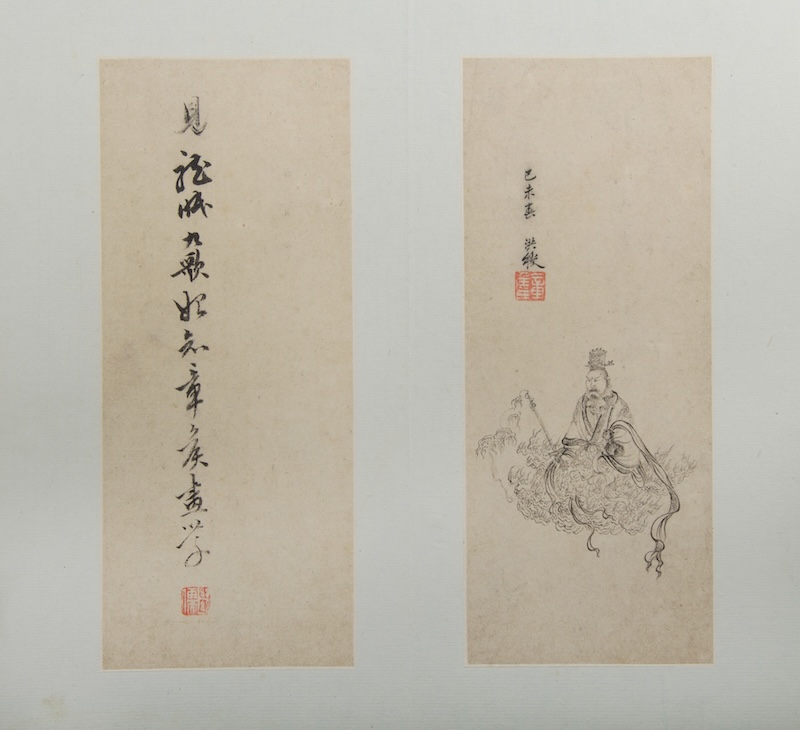
Chen Hongshou, Ming Dynasty, "Landscape, Figures and Flowers" (volume) 1618–1622
Inspired by Li Gonglin's works, Chen Hongshou created eleven paintings of characters in "Nine Songs" and one painting of "Qu Zi Xing Yin". This time he was under 20 years old, and the "Landscapes, Figures and Flowers Pictures (Album)" on display in the exhibition was his 20th Completed when he was 24 years old, it demonstrates the wide range of subjects he covered and his meticulous brushwork, proving his teenage genius. The painter's contemporary, the famous connoisseur and painter Chen Jiru expressed his approval in a postscript, and his style was also inspired by Li Gonglin's "Nine Songs".
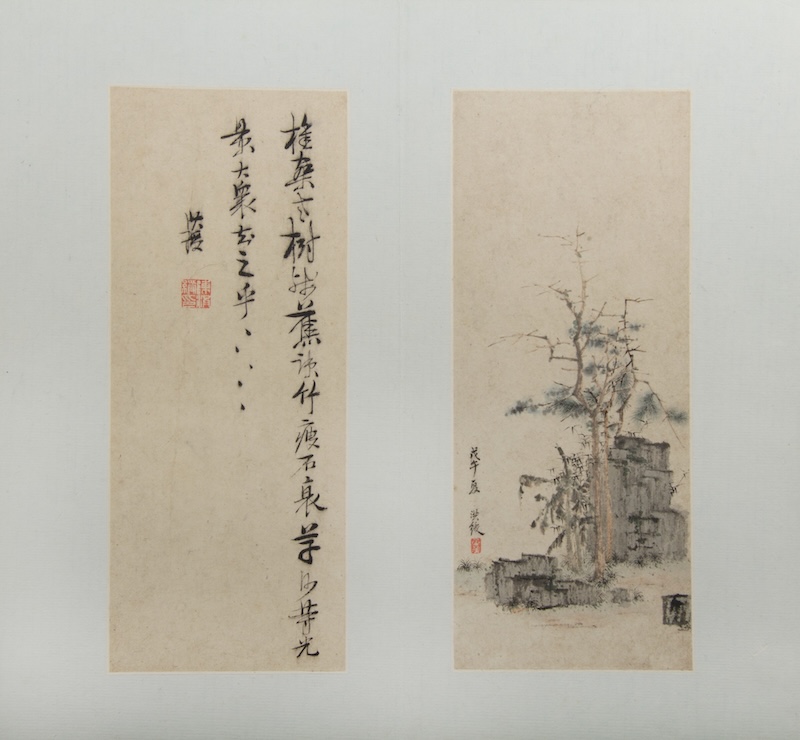
Chen Hongshou, Ming Dynasty, "Landscape, Figures and Flowers" (volume) 1618–1622
This set of albums was created only 25 years after the fall of the Ming Dynasty. The first opening depicts a desolate garden scene, which seems to be a metaphor for the decadence of society in the late Ming Dynasty. Chen Hongshou asked, "Does the public regard this kind of scenery?"
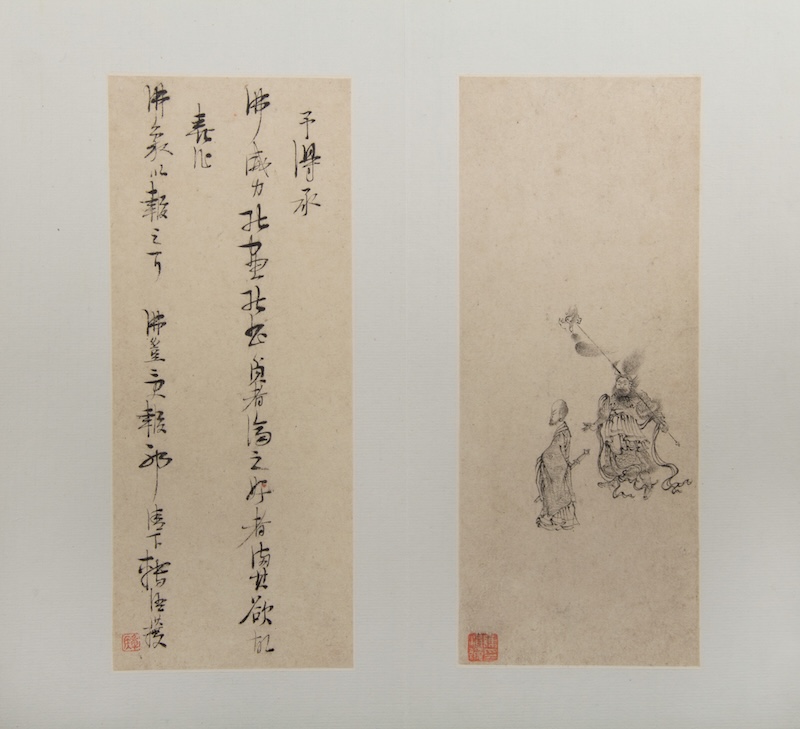
Chen Hongshou, Ming Dynasty, "Landscape, Figures and Flowers" (volume) 1618–1622
In the following chapters, Chen Hongshou's research on Li Gonglin's line drawings, Ni Zan's desolation and tranquility, Wang Meng's misty peaks and Qian Xuan's simplicity also showed his admiration for the literati and hermits. Years), he returned to the south and lived in seclusion in Shaoxing. The depiction of the Solitary Beauty Peak in Guilin in this album shows his early interest in the fantastic landscapes of Wu Bin (c. 1583–1626).
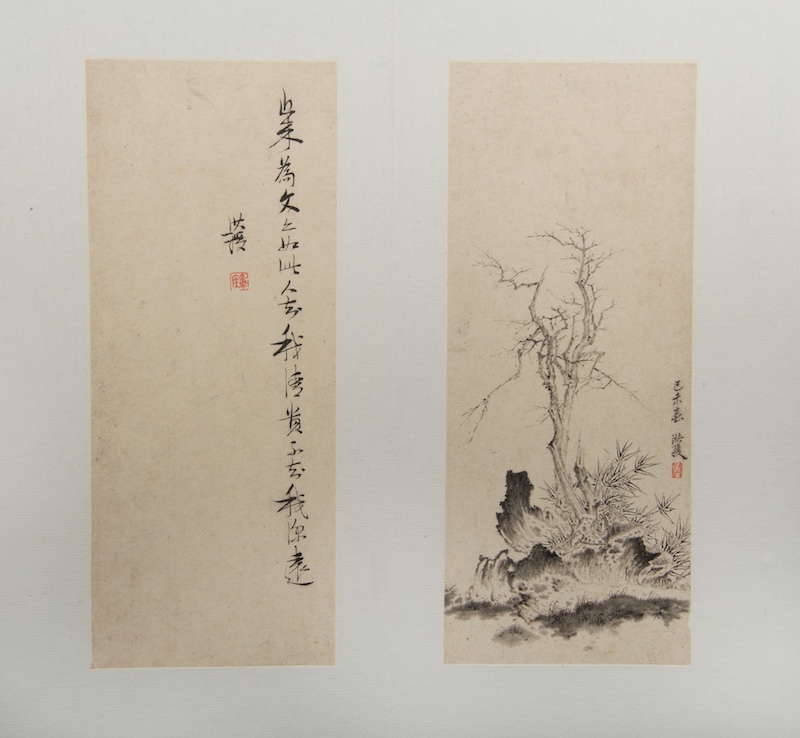
Chen Hongshou, Ming Dynasty, "Landscape, Figures and Flowers" (volume) 1618–1622
Tao Yuanming and his retreat
In 405 AD, after serving as an official for several times and going into seclusion, Tao Yuanming became an official for the last time as Peng Zeling. In November, he wrote "Come Back and Come Back", resigned from office, and began his life of seclusion until the end of his life.
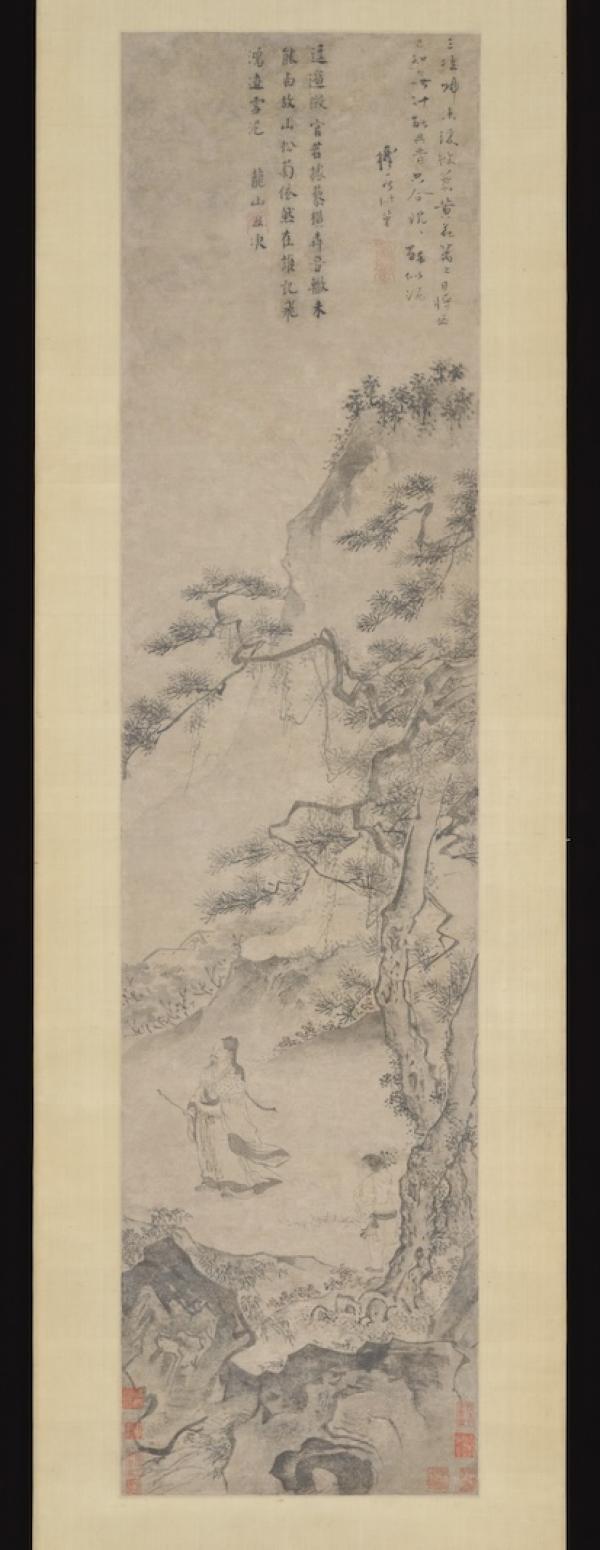
Du Jin, Ming Dynasty, "Tao Yuanming Appreciating Chrysanthemums (scroll)", late 15th to early 16th century
Tao Yuanming has always been a source of inspiration for later generations of scholar-officials. They believed that seclusion was a stance and a way to pursue a pure spiritual world. Du Jin's works of the Ming Dynasty show Tao Yuanming's scene of admiring autumn flowers in the mountains, just as described in his "Drinking Part 5": "Picking chrysanthemums under the eastern fence, leisurely seeing the southern mountains." This poem was written around AD 417, which was the 12th year after the poet returned to his fields, and it was on the eve of the fall of the Eastern Jin Dynasty. The poet expresses his ambition through drinking poetry. Du Jin wrote a poem on the painting: "Returning slowly from three paths, the sun is approaching the west on the yellow flower fence. It is known that there is no way to prosper the Jin Dynasty, it can only be intoxicated like mud." describing the situation of this painting and Tao Yuanming's state of mind.

Du Jin, Ming Dynasty, "Tao Yuanming Appreciating Chrysanthemums (Scale)" (detail), late 15th to early 16th century
Du Jin (1465-1509) was also a scholar and poet. During the Chenghua period, he failed to pass the imperial examination and decided to make a living as a painter. He focused on landscapes and character scenes in the Southern Song Dynasty. Tang Yin met Du Jin when he was about 30 years old and was deeply influenced by him.

Lu Zhi, Ming Dynasty, "Chrysanthemum Planting Picture (Scale)", 16th century
Lu Zhi (1496-1576), who was slightly later than Du Jin, also expressed his ideal of seclusion in "Chrysanthemum Planting Picture". Lu Zhi was a student of Wen Zhengming and supported his family by selling paintings. Around 1557, he lived in seclusion in the Western Hills of Dongting, Suzhou, and planted flowers, just like the "Peach Blossom Spring" alluded to in his poem "Taste the pottery paths on the sea, the clouds, leaves, frost and flowers." His paintings are full of mist and soft colors, like a portrayal of a peach blossom garden.
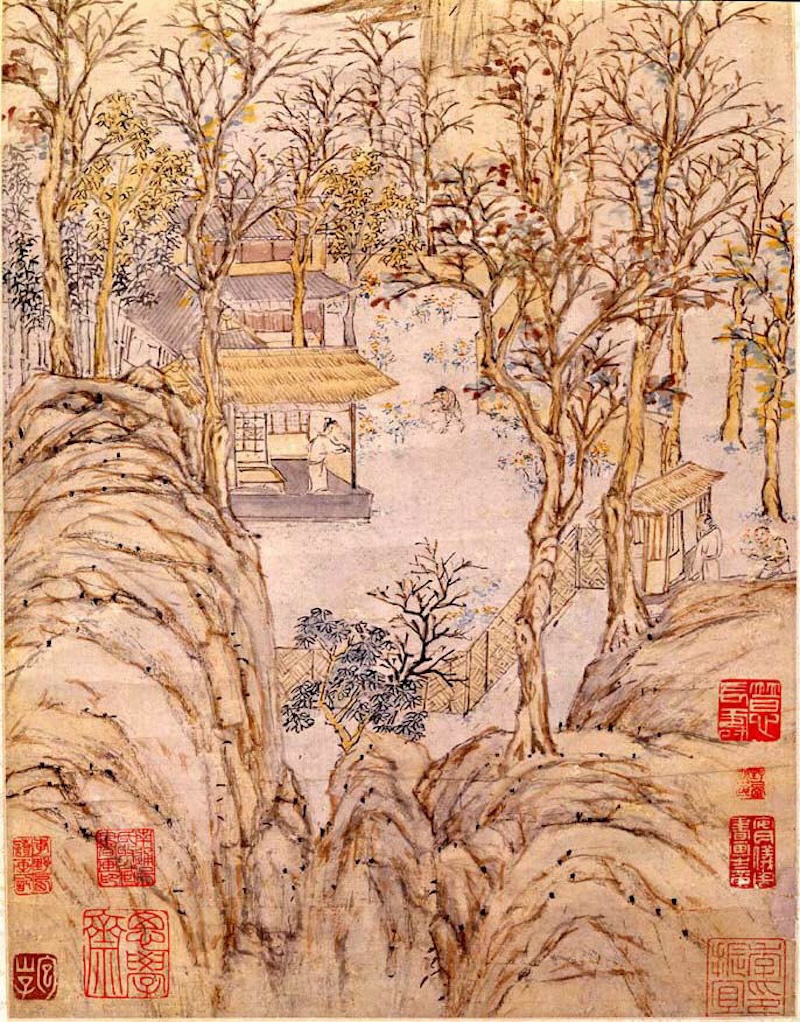
Lu Zhi, Ming Dynasty, "Chrysanthemum Planting (Axis)" (detail), 16th century
The isolation and "pleasurable" life in "Peach Blossom Spring" is a utopian world created by Tao Yuanming. Most scholars believe that "Peach Blossom Spring" was written by Tao Yuanming who was dissatisfied with the society at that time and hoped to pursue a peaceful and harmonious society. Zhang Hong's "Overview of Taoyuan Sheng" was painted six years before the fall of the Ming Dynasty. He may have reproduced Tao Yuanming's fantasy world with the same state of mind.
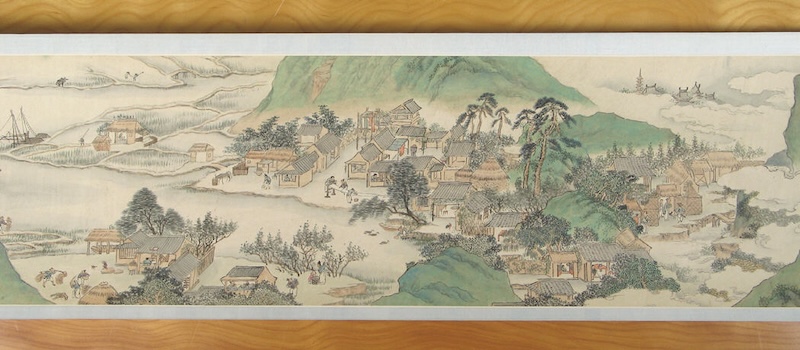
Qing Dynasty Zhang Hong's "Overview of Taoyuan Sheng (Volume)" (detail) 1638
In this hand scroll, the audience is led to follow the fisherman from a meandering stream into the Peach Blossom Spring, thus showing the scene of rural life of "traffic on the road, chickens and dogs hearing each other".
Tao Yuanming's idea of seclusion deeply influenced the spiritual outlook of Chinese literati, and influenced the concepts of later generations through literary works and communication. By the seventeenth century, people began to express their desire for seclusion by placing themselves in scenes from Tao Yuanming's poems through paintings.
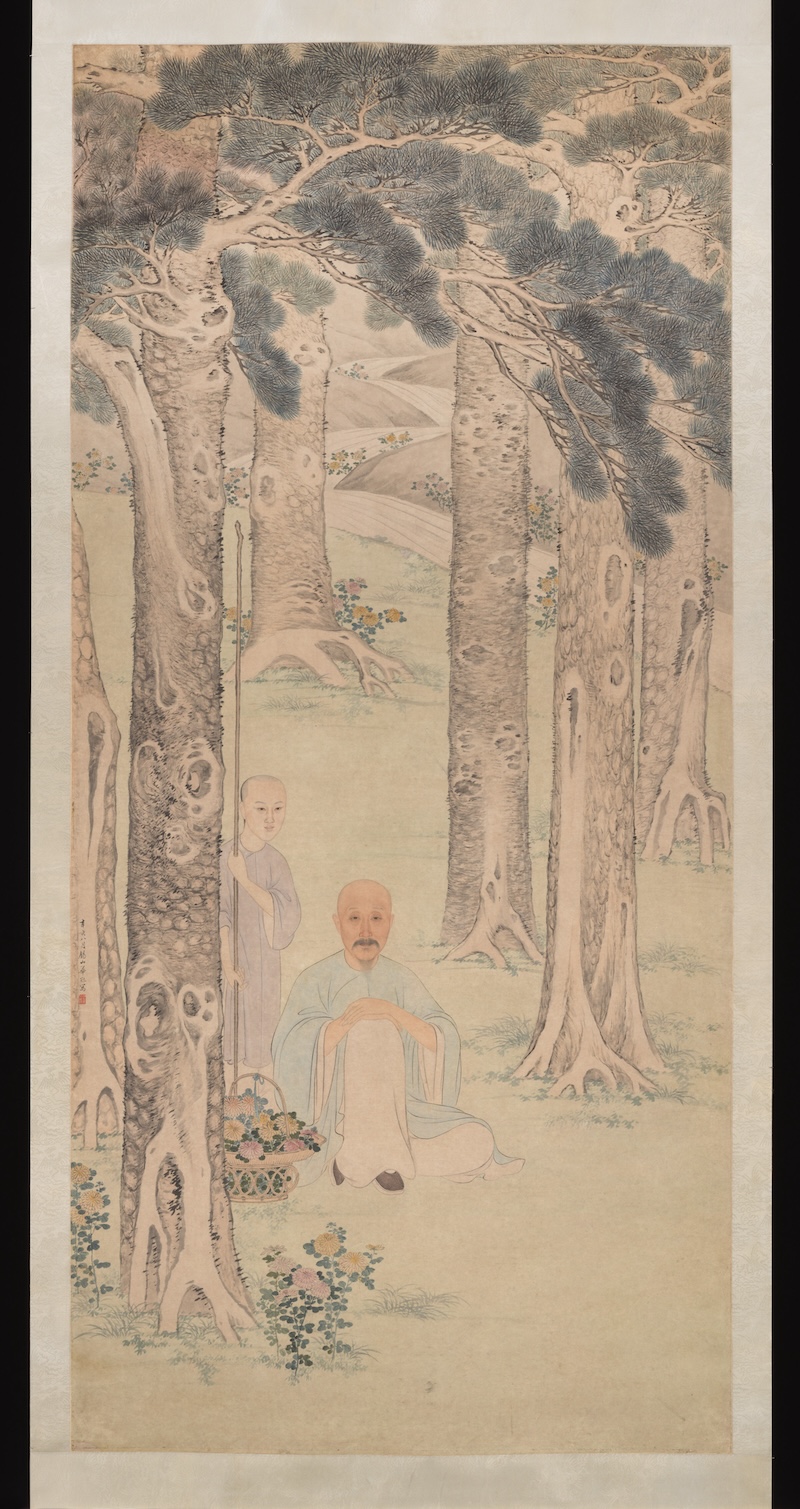
Hua Guan, Qing Dynasty, "Picture of Scholars Picking Chrysanthemums (Scale)", 1791
The author of "Scroll of Picking Chrysanthemums" is Hua Guan (ca. 1740-ca. 1822), a painter from Wuxi in the Qing Dynasty. He was active during the Qianlong period and enjoyed a long life and a long artistic life, but for some reason he was not among the first-class calligraphers and painters at that time. ranks. Hua Guan is good at "portraits of characters", and his portraits belong to Zeng Jing's "Bochen School". This school's painting method emphasizes the characteristics of Chinese painting brush and ink, insists on using ink lines and ink halo as the bones, and moderately borrows from Western painting techniques. Hua Guan lived in the capital for many years, during which he made friends with many high-ranking officials and had frequent contacts with the royal family, officials and literati in the capital. The identity of the person in the painting picking chrysanthemums in the "Picture of Scholars Picking Chrysanthemums" has not been determined, but The influence of Tao Yuanming can be seen.
Chrysanthemum also has a noble image in Chinese culture. Since Tao Yuanming, chrysanthemum, Tao Yuanming and the hermit are related to each other. Gao Fenghan (1683-1749) was an official in his early years. After he resigned, he lived in Yangzhou and worked in flowers. At the age of 54, he lost his right hand due to illness, so he painted with his left hand. "Ammonite Picture" is a manifestation of his unrestrained brushwork in his mature period. His expressive work with his left hand is also a product of the influence of the wet brushwork of Shi Tao (1642-1707). "Without fences or branches, the wild grass in the autumn garden will grow by itself. There are a few rugged rocks along the horizontal roots, and Mr. Wuliu will be drunk when he is drunk." The rhythm of calligraphy, the artistic conception of poetry and the ammonite diagram are dynamically integrated.
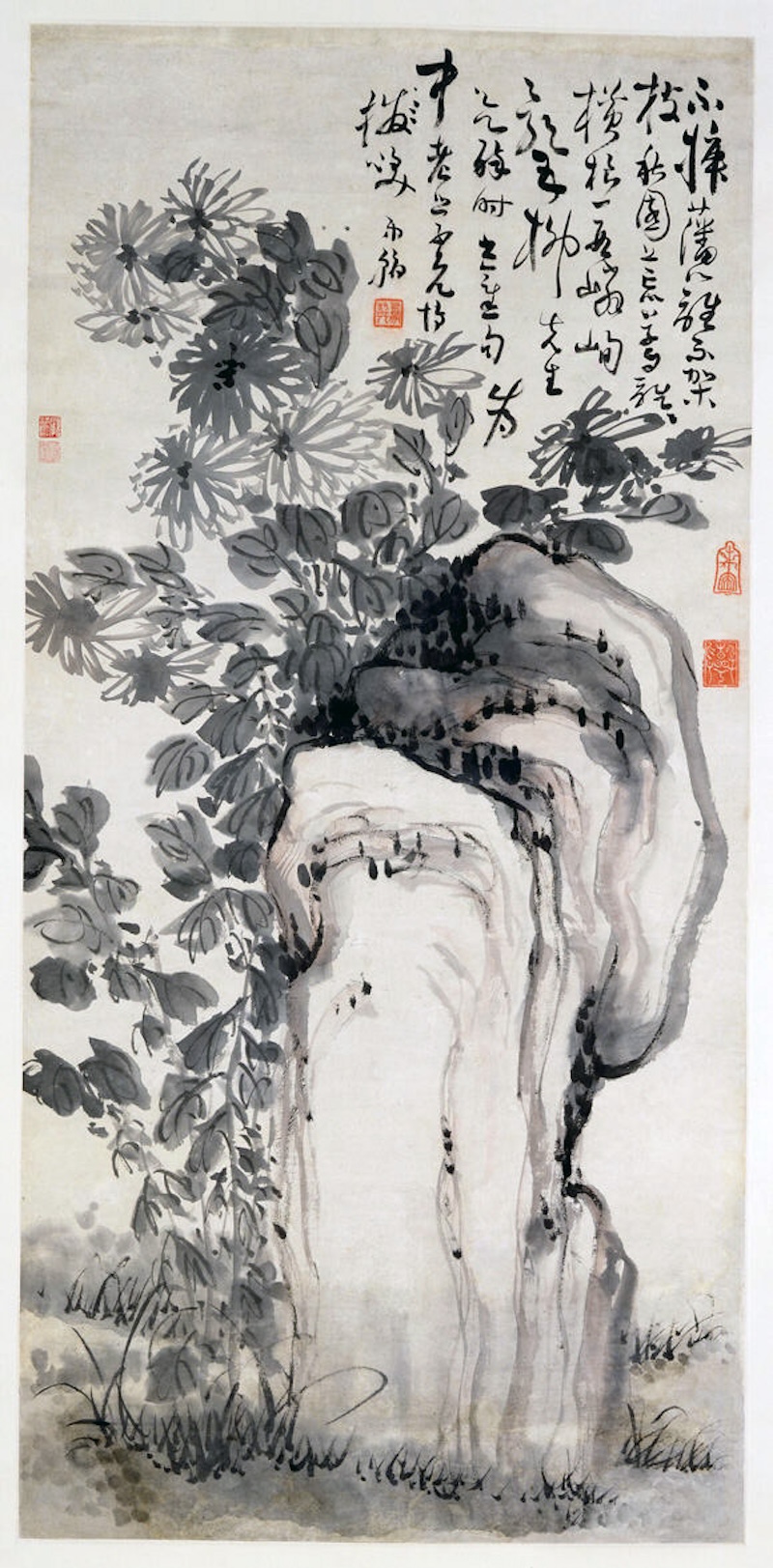
Gao Fenghan, Qing Dynasty, "Ammonite Scroll", 18th century
In modern times, Wang Guowei evaluated Tao Yuanming's hermit poems as "a state of selflessness". In the war-torn China of the 1940s, Fu Baoshi also used ancient themes to express his sadness, anger and confusion about the troubled times.
Landscape after Tang Poetry
In Chinese cultural tradition, landscape and poetry influence each other. Many poems depict the beauty of landscapes, reflecting the poet's perception and emotional expression of the natural landscape. At the same time, landscape paintings often use poems as themes, reproducing the artistic conception and emotions in the poems through painting.
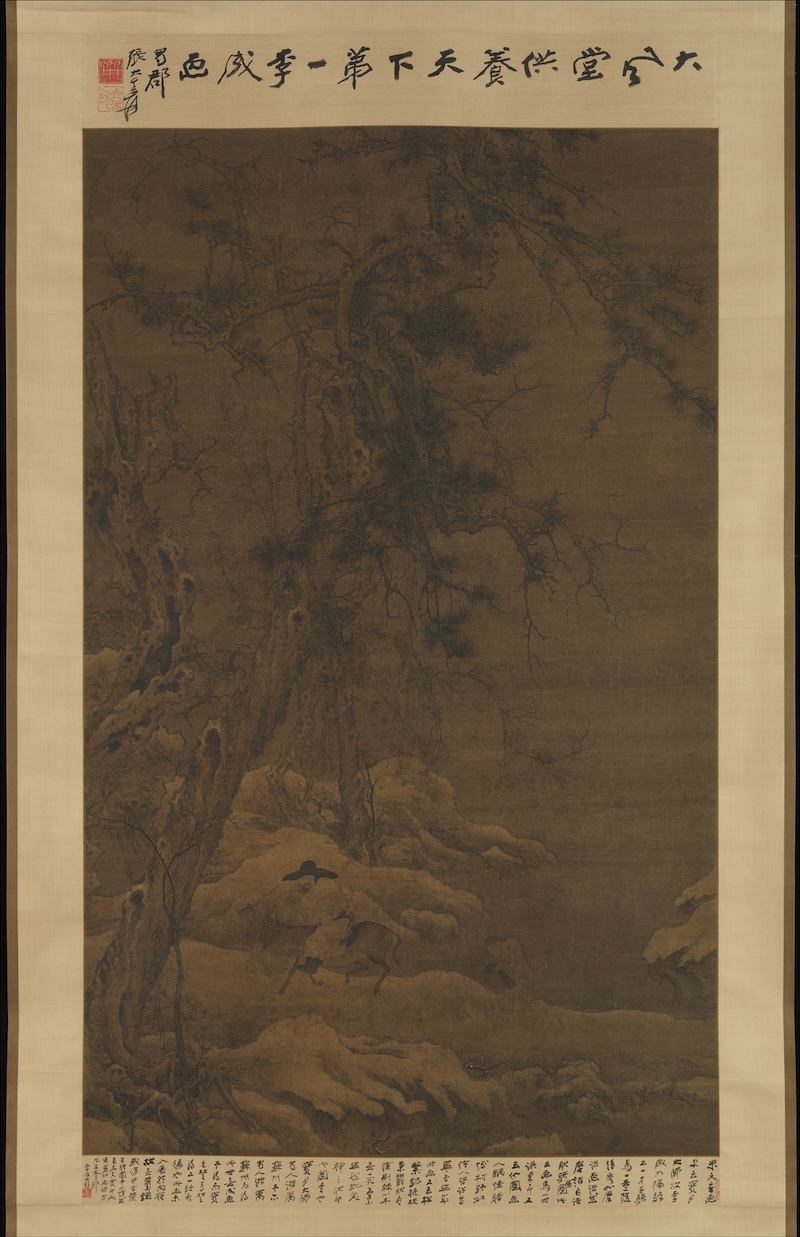
"Picture of a Donkey in the Cold Forest (Scale)" by Anonymous Song Dynasty (old biography: Li Cheng), early 12th century
During the Northern Song Dynasty in the tenth and eleventh centuries, majestic landscapes became a source of inspiration. The Five Dynasties painter Jing Hao (900-930) painted and discussed pine trees and compared them with the virtues of a gentleman, which was inherited in Song paintings. Li Cheng (919-967) is famous for his dead trees in the cold forest. Mi Fu's "History of Painting" says: "Master Baoyue collected four paintings from Li Cheng. On the way, a talented man rode a horse, followed by a boy. They are as beautiful as Mojie's paintings." "Han Li Cheng" "Lin Ce's Donkey Picture" was originally written by Li Cheng. The cold forest is the epitome of natural change. The pine trees symbolizing the gentleman and the surrounding dead trees create a bleak scenery, which is also the scene of Mojie poetry.
"Walking to a water-poor place, sitting and watching the clouds rise" comes from "Zhongnan Farewell" by Wang Wei of the Tang Dynasty. Tang Di of the Yuan Dynasty was one of the first southern literati to revive the landscape tradition of the Northern Song Dynasty. He used the tree and stone techniques of the Northern Song painters of the 11th century to depict Wang Wei's poetic landscape.

Yuan Dynasty Tang Di's "Mojie Poem Inspiration (Scale)" 1323
This work is one of many large-scale works created by Tang Di in imitation of Beizong's landscapes. In particular, the crab claw tree technique was clearly inherited from Li Cheng and Guo Xi. Northern Song painters tended to reproduce the power of nature through rich techniques, while painters used more calligraphy brushes to reinterpret the grand style of the Northern Song Dynasty.

Yuan Dynasty Tang Di's "Mojie Poetry Inspiration (Shaft)" (detail) 1323
Wang Wei of the Tang Dynasty was good at both poetry, calligraphy and painting. He created the ink landscape painting school and was known as the "ancestor of Nanzong painting". "Records of Famous Paintings of the Past Dynasties" praised his contribution to landscape painting by saying "painting landscapes involves ancient and modern times". "Records of Famous Paintings of the Tang Dynasty" "The painting "Wangchuan Picture" has a lush valley with flying clouds and water, which is unexpected and strange, and the writing is full of strange things."
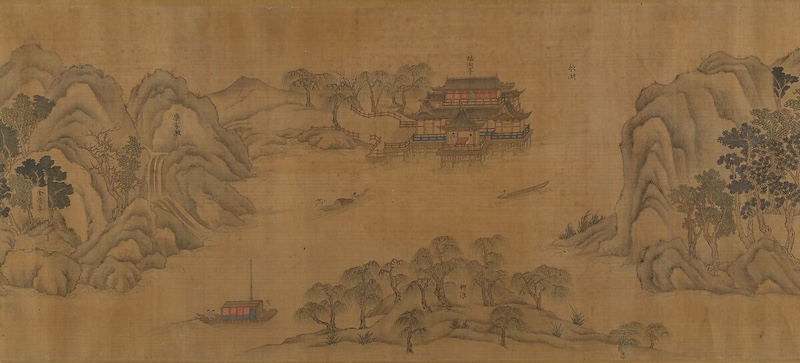
Anonymous (Northern Song Dynasty Guo Zhongshu style) "Wangchuan Picture", 16th-17th century
Although the original painting of Wang Wei's "Wangchuan Picture" has long been lost, it has been preserved in the form of rubbings and copies. Its original composition is compared with the scenes depicted in twenty Wangchuan poems, and has been repeatedly interpreted by later generations of painters. The "Wangchuan Picture" on display combines the architectural forms of the original painting with the elegant and emotional paintings of Wen Zhengming's followers.
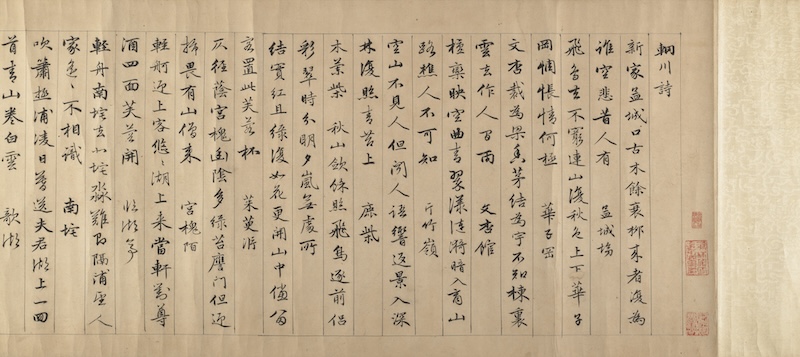
Anonymous (Northern Song Dynasty Guo Zhongshu style) Wang Wei's "Wangchuan Poems" copied from "Wangchuan Pictures", 16th-17th century

Anonymous (Northern Song Dynasty Guo Zhongshu style) "Wangchuan Picture", 16th-17th century
The poetry of Du Fu and Bai Juyi was also the theme painted by later generations of painters. The "Seeing Off Guests in Xunyang" by Ding Yunpeng of the Ming Dynasty reproduces the melancholy scene in "Pipa Xing" of "moving boats closer to invite each other" and lamenting that "we are all fallen people in the world".

Ding Yunpeng of the Ming Dynasty, "Seeing Off Guests in Xunyang" (scroll)

"Send Off Guests in Xunyang" by Ding Yunpeng of the Ming Dynasty (detail)
The artistic conception of the Tang poems "Birds lodge in the trees by the pond, monks knock on the door under the moonlight", "cocks sing in the thatched shop in the moonlight, and people walk in the frost on Banqiao" were exaggerated by Sheng Maoye in the Ming Dynasty with a dense atmosphere. Sheng Maoye is a professional painter active in his hometown of Suzhou. In his works, he shows a keen interest in the scenery in the mist or the changes in the atmosphere at dusk and dawn. Tang poetry provides the artist with imaginative space. He uses the shades of dry and wet ink to Changes imply different states of climate, which is recognized by painters such as Gong Xian.

Ming Dynasty Sheng Maoye's "Tang Poetic Landscape Atlas", mid-17th century
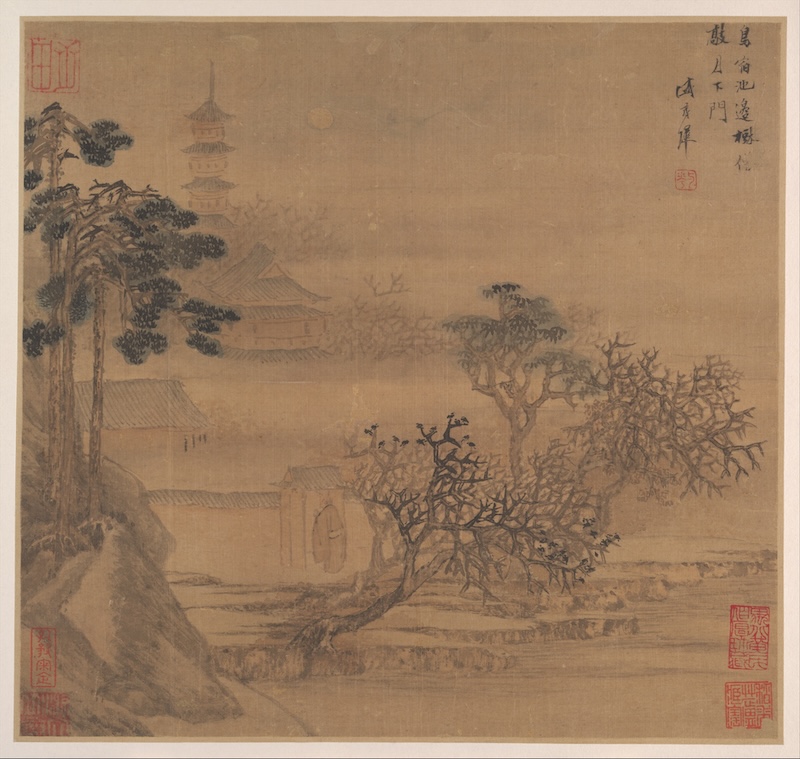
Ming Dynasty Sheng Maoye's "Tang Poetic Landscape Atlas", mid-17th century
Dong Qichang, the "unique southern sect", and Wang Jian, who was influenced by Dong Qichang, imitated ancient times while expressing poetic flavor. Among the eight pages of Dong Qichang's "Landscape Poetry and Painting Album", seven pages are tributes to Dong Yuan, Wang Meng, Huang Gongwang, Ni Zan and other Nanzong painters, and are accompanied by excerpts from Tang Dynasty landscape poems. Although he imitated different styles, these landscape paintings are related to each other and reflect Dong Qichang's views on landscape painting.

"Landscape Poetry and Painting Album" by Dong Qichang of the Ming Dynasty, early 17th century
Wang Jian was Wang Hui's teacher, Wang Shimin's close friend, and one of the central figures in orthodox painting in the early Qing Dynasty. On the basis of the "Southern Sect" advocated by Dong Qichang, the scope of his ancient studies gradually expanded. He reproduced the works of painters from the Song and Yuan Dynasties on a miniature scale. After "dying ten antique frames," he "occasionally found the "Shaoling Collection" on his desk, so he selected the sentences that fit the context and inscribed them on the left." According to Wang Jian's autobiography, this landscape album was given to Qian Muweng in Yushan. When he was "not good at walking", he "kept this album to be used for sleeping and traveling".
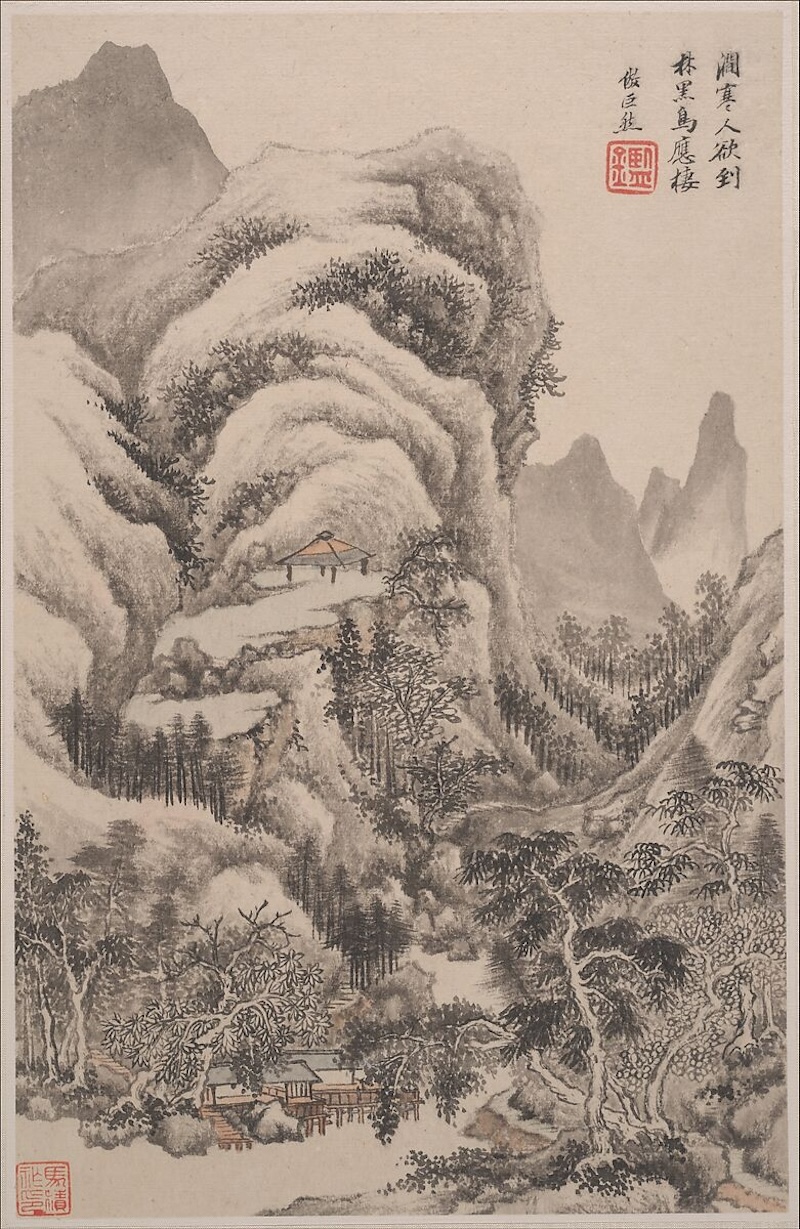
Wang Jian, Qing Dynasty, Antique Landscape Illustrations, Album 1668
After Tang poetry, Song poetry is also a theme repeatedly expressed by painters. In this exhibition, there are at least three works that reproduce "Red Cliff Ode" by Su Shi of the Northern Song Dynasty. Among them, the theme and style of "Later Red Cliff Ode" (Tuan Fan) reflect the taste of the literati in the late Yuan Dynasty. In the painting, Su Zi meets the Taoist priest who once turned into a lonely crane in his dream. His brushwork and moss dots are based on Dong Ju's tradition. The brisk arcs of water waves and reeds remind people of the 14th century painter Sheng Mao.
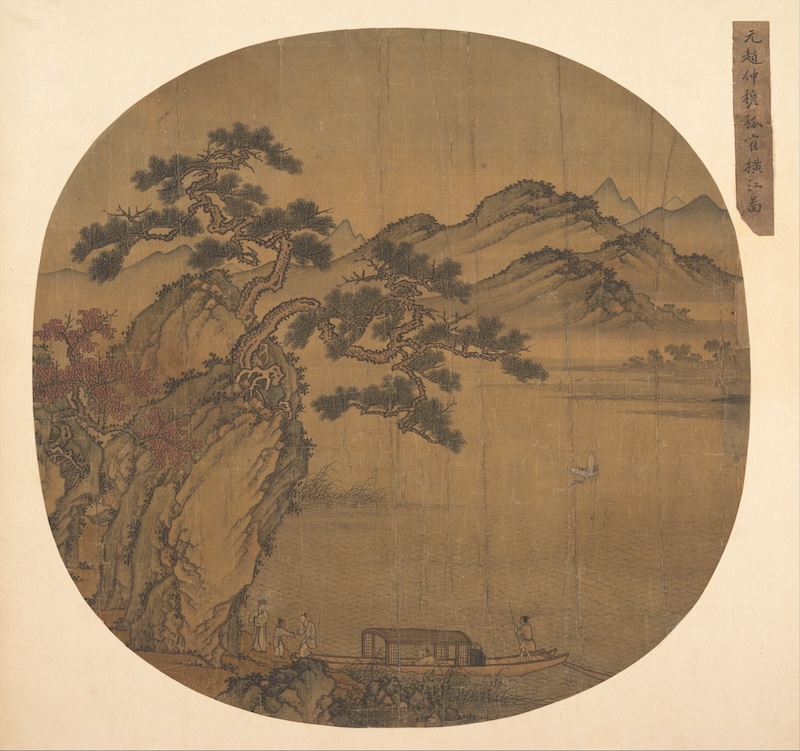
Unknown late Yuan/Ming dynasty, late 14th to early 15th century, late 14th to early 15th century
Zhang Ruitu's "Hou Chibi Fu Tu" written by Zhang Ruitu in the late Ming Dynasty focuses on the scene when Su Shi was alone at the top of the mountain, "howling suddenly, the grass and trees shaking, the mountains humming and the valleys echoing, the wind blowing and the water surging". This painting and another poem "Red Cliff Nostalgic" written by Su Shi shortly after his resignation, copied by Zhang Ruitu, reflect his feelings about life and politics.

Zhang Ruitu of the Ming Dynasty, "Poster to Chibi (Volume)", 1628
Zhang Ruitu was promoted to Shangshu in 1626 with the support of Wei Zhongxian (1568-1627). He later retired in 1628, shortly after the fall of the Wei family, and spent his later years in his hometown of Fujian. Most of his paintings were painted after returning to his hometown.
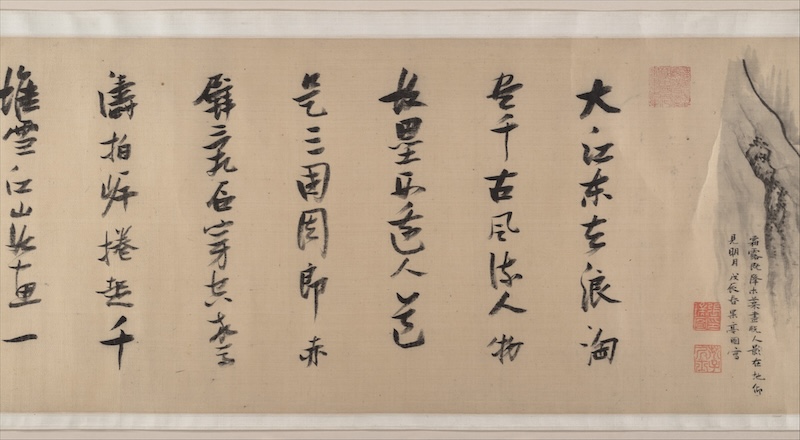
Calligraphy on the back volume of Zhang Ruitu's "Hou Chibi Fu Tu" of the Ming Dynasty
In addition to paintings, square vases with red cliffs on the front and back were also fired in Jingdezhen, and Du Fu's poetry was also painted on the blue and white brush holders.

A square vase with blue and white patterns on the front and back of the red cliff at Jingdezhen Kiln in the Kangxi period of the Qing Dynasty
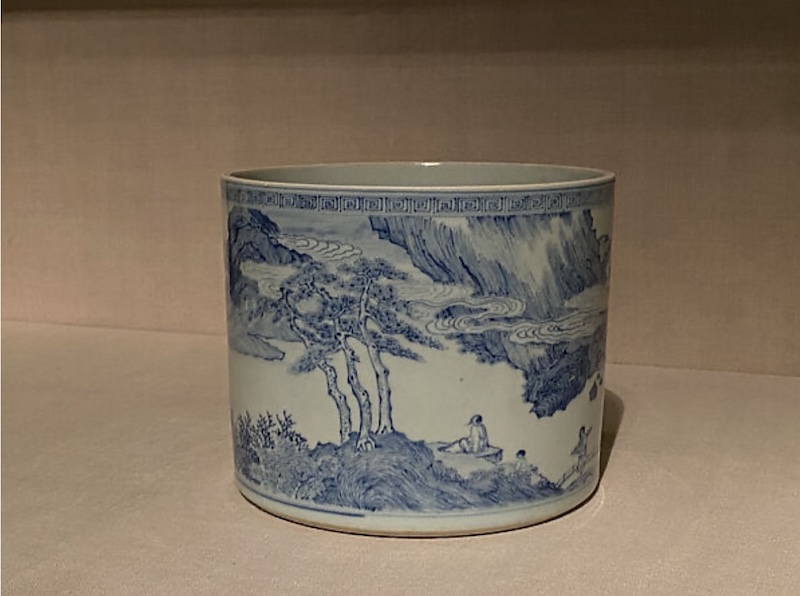
Qing Dynasty Kangxi blue and white Du Fu poetic landscape painting pen holder, circa 1670
In the Ming Dynasty, when the publishing industry was developed, Tang poetry entered people's daily lives in the form of paintings. In the exhibition, the woodcuts "Six Characters of Tang Poems and Paintings" and "Herbs and Flowers Poems" were drawn by Cai Chonghuan in the Ming Dynasty and published by Huang Fengchi, the owner of Jiyazhai. They were praised by people at the time as "the poems are beautiful, the words are exquisite, and the paintings are magical." The large-scale publication of painting books with paintings as the main body in the Ming Dynasty was also a major change in the history of Chinese books. This change can indeed be regarded as the popularization of "elegant" books that originally belonged to the literati and bureaucratic classes.
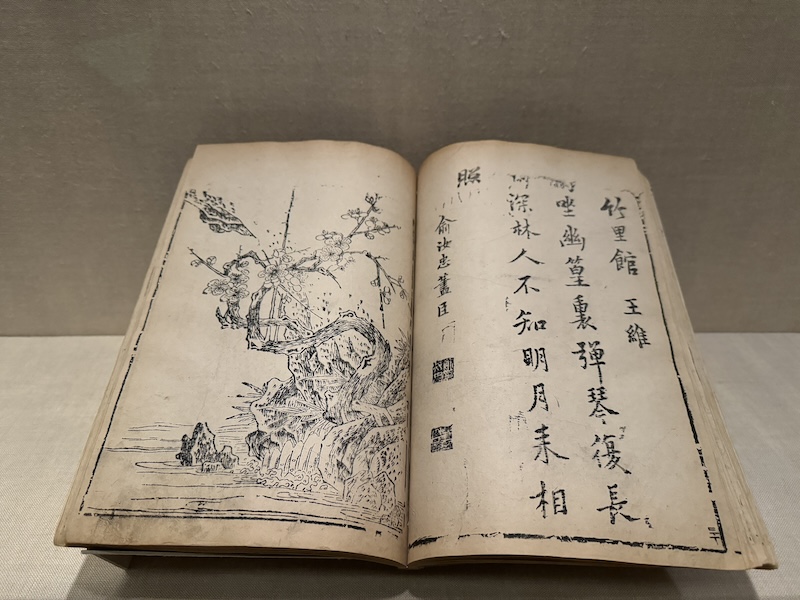
Ming Dynasty Cai Chonghuan drew and Huang Fengchi published "Six Characters of Tang Poems and Paintings" in 1621, first edition
"In my spare time, I read a lot of ancient and modern poetry from the Jin and Tang dynasties. Among them are some of the best lines, some of which express what is in a person's heart, and some of which pretend to be a person's current scene. However, it is not because I am sitting quietly, with a bright window and a stove. If you are fragrant and depressed with all your worries, you will not be able to see the good words and good intentions, and you will not be able to imagine the quiet and beautiful feelings. Even the idea of painting is not easy to come up with." The description in "Linquan Gaozhi" is exactly the "visual and poetic state" elaboration.
Note: Some of the work information in this article is compiled from the exhibition website of the Metropolitan Museum of Art in New York. The exhibition will last until June 16.
